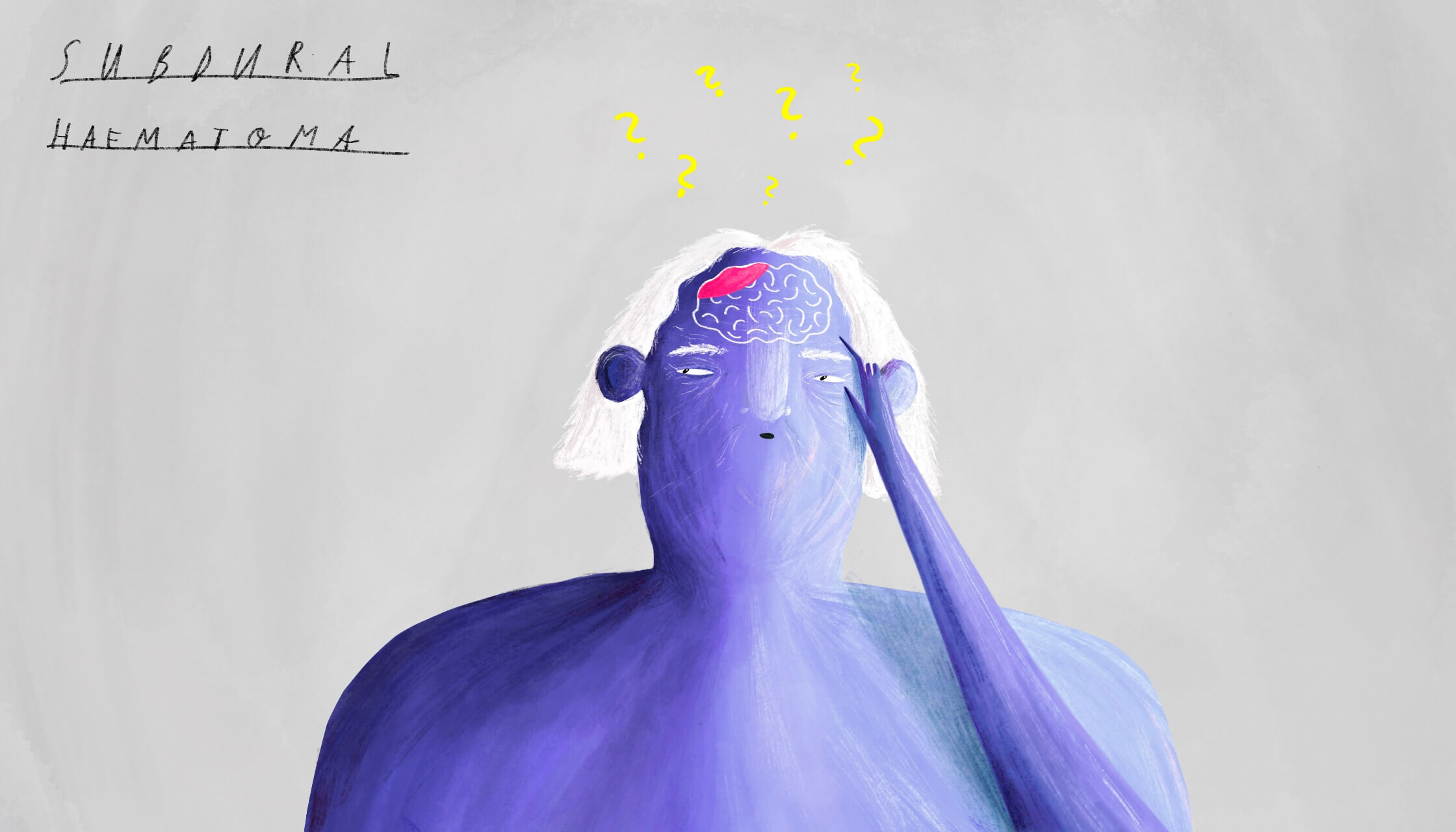Subdural haematoma
or blood clots in the subdural space.
Find out more about subdural haematomas; blood clots that build up on the surface of the brain

Neurosurgeon Brisbane
Subdural haematoma key points
- A subdural haematoma is a blood clot in the subdural space
- The subdural space is a very tiny space between the brain’s linings
- There are two types of subdural haematomas: chronic and acute
- Both are caused by trauma, however in chronic subdural haematomas the trauma would be barely noticeable whereas in acute subdural haematomas the trauma is life threatening and patients need immediate surgery
Subdural haematoma Brisbane
What is it?
A subdural haematoma is a blood clot on the surface of the brain. It does not go into the brain itself.
The brain has 3 linings. These linings protect the brain and are wrapped around its entire surface. There is a very thin space between each of these layers. One of these spaces is called the subdural space. It is a very common space for blood to accumulate.
Is it common, do other people get it?
Chronic subdural haematoma is common in elderly people who are taking blood thinning medication. The classic combination is a small bump to the head (often so trivial that it is not even noticed) followed by slow deterioration in mental function and possible physical function over weeks to months.
Chronic means ‘slow, over a long time’ and this is typically what happens to the patient: a slow and prolonged deterioration of brain function as the blood clot slowly gets bigger and bigger over weeks to months.

Neurosurgeon Brisbane
Acute subdural haematoma often occurs in younger people who have been involved in a high speed crash, usually when alcohol or drugs are involved, or too much speed.
Acute means ‘sudden’. Patients with acute subdural haematoma are usually in critical condition and on a breathing machine and tend to require life saving surgery. Even though it is a subdural hematoma, it is very very different to the chronic subdural haematoma older people get.
Subdural haematoma symptoms
What are the symptoms?
The symptoms of chronic subdural haematoma are simply due to pressure on the brain. This results in gradual worsening of brain function.
Often noticed is:
- worsening confusion,
- memory loss,
- disorientation,
- possibly weakness down one side of the body.
Families commonly report that “a few weeks ago they were active, gardening, going to the shops, and now they are confused and unable to do much, nothing like their old self.”
If left untreated chronic subdural hematoma can become life threatening.
Subdural haematoma causes
What causes it? Did I do something to cause it?
Subdural haematoma is caused by trauma.
In serious trauma, like a motor vehicle accident the rapid bleeding into the subdural space is very quickly life threatening within seconds to minutes and requires urgent surgery. This is called an acute subdural haematoma (acute meaning rapid). Because younger people tend to be involved in high speed accidents this is more common in younger people.
Older people get a different type of subdural haematoma, called chronic haematoma. This is a very different condition altogether. It is still blood that collects in the subdural space, but unlike an acute hematoma where fresh blood rapidly enters and expands the subdural space, chronic subdural hematoma is a very slow build up of old blood in the space. It can take up one to two months before symptoms start to even occur.
No. It is always due to trauma.
Subdural haematoma treatment
How is it treated?
Chronic subdural haematoma (neurosurgeons always abbreviate this to CSDH, or “chronic subdural”) usually requires surgery. This is because most of them do not resolve on their own.
If left alone they will slowly get bigger and bigger. This puts pressure on the brain. In older people this inturn causes confusion, disorientation, memory problems, and even weakness down one side of the body.
The surgery itself is very minimal and involves a simple washout of the chronic subdural haematoma through two small burr holes. It’s not the typical blood clot that you’d imagine; it actually looks like motor oil, and this black thick liquid blood easily washes out throughout the two small holes. It is a very effective and simple treatment for this common condition.

Neurosurgeon Brisbane
Do I need surgery when I have a subdural haematoma?
Most of the time yes, if it is large or causing symptoms. I will know with certainty when I examine you and your scan.
After surgery there is a 70% chance that it will be cured. There is a 30% chance it comes back and a second operation will be required.
Recovery after surgery is fairly quick. A period of rehabilitation is usually required however. There is a 30% risk that the chronic subdural hematoma may reoccur.
Subdural haematoma risks
Is this treatment safe?
This is one of the more simple and less invasive brain operations. The risks are more related to the general health of the patient.
Because these patients tend to be older, there are generally quite a few other medical problems they have that need to be sorted out before an anaesthetic can be safely given. Sometimes it is not possible to perform surgery because of poor overall health.
I would need to see you to determine this. Most of the time it is not advisable to leave it as they eventually all get bigger (with some rare exceptions).
Brain surgeon Brisbane
What should I do now?
If you would like me to examine your case then please feel free to contact my team.
Ready to make an appointment?
Ramsay Specialist Centre
Suite 325
Newdegate St
Greenslopes QLD 4120

